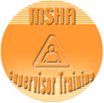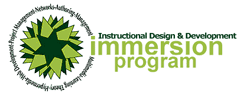

Condensed Generic JTA
The George Mason University project team, with assistance from an MSHA SME, developed a set of generic JTAs that represent the high-level duties performed by mine supervisors in general. The overall supervisory job was categorized into twelve top duties, and each top duty is completed by sequential steps/tasks. Further, the tasks were assigned an importance rating, which was used to prioritize the most significant in regard to safety factors. The ratings include:
- 1 = Important
- 2 = Very Important
- 3 = Critical
A task labeled as “1” would have marginal safety effect if not properly completed. A level “2” task may cause significant, but non-fatal effects if not properly completed. A “3” or critical task may cause fatalities or have a catastrophic effect if not completed properly.
Duty/High-Level Task |
Description |
Tasks |
Importance Rating |
1. Self Assessment and Personal Fitness |
Preparing for a safe and healthful work shift for himself/herself and crew through self-assessment and personal fitness determinations prior to start of shift |
1.1. Conduct self-assessment |
2 |
1.2. Be prepared to deal with employee problems/concerns |
2 |
||
2. Start of Shift Activities
|
Conducting start-of-shift activities |
2.1. Arrive on time to review reports and records |
|
2.2. Review records and reports at mine office |
3 |
||
2.3. Talk to previous shift foreman |
2 |
||
2.4. Take pre-shift phone call |
3 |
||
3. Prior to Entering the Mine
|
Conducting the required activities prior to entering the mine |
3.1. Check for and/or obtain necessary safety equipment |
3 |
3.2. Obtain necessary tools and equipment |
2* |
||
3.3. Check crew |
3 |
||
3.4. Perform check-in at the mine |
3 |
||
4. Entering the Mine |
Properly boarding and traveling into the mine by slope car and/or elevator |
4.1. Conduct smoke search |
3 |
4.2. Board slope car |
|
||
4.3. Board elevator |
|
||
4.4. Board mantrip |
|
||
5. Travel to the Section |
Properly traveling to the section by rail and rubber-tired mantrip |
5.1. Board mantrips |
3* |
5.2. Observe conditions while traveling |
3* |
||
5.3. Park mantrip |
3* |
||
6. Arrive on the Section |
Conducting the appropriate activities upon arrival on the section.
|
6.1. Meet with previous shift foreman for switch‑off discussion |
2 |
6.2. Monitor equipment operators pre-op examination |
|
||
6.3. Verify hot seating procedures |
1 |
||
6.4. Proceed to the section feeder |
|
||
7. Section Observation
|
Conducting a safe and thorough section observation |
7.1. Monitor start-up |
2 |
7.2. Check for hazardous conditions and methane |
3 |
||
7.3. Monitor employee activities |
3 |
||
7.4. Monitor equipment |
2 |
||
7.5. Assure supplies and tools are available to complete assigned tasks |
2 |
||
7.6. Assure center lines are installed prior to a place being mined |
2 |
||
7.7. Coordinate anticipated downtime |
1 |
||
8. Conduct On-shift Examination
|
Conducting a proper and thorough on-shift examination |
8.1. Examine faces |
3 |
8.2. Examine other areas of section |
3 |
||
8.3. Observe location and physical conditions of cables |
2 |
||
8.4. Check for first aid equipment |
2 |
||
9. Conduct Pre-shift Examination
|
Conducting a proper and thorough pre-shift examination |
9.1. Examine section tail piece and perform checks |
2* |
9.2. Examine haulway |
2* |
||
9.3. Conduct dust parameter examination |
2 |
||
9.4. Examine battery charging station |
2* |
||
9.5. Examine faces and immediate returns |
2 |
||
9.6. Monitor roof control requirements |
2 |
||
9.7. Examine power center |
2 |
||
9.8. Call results out to the oncoming shift |
3 |
||
10. End of Shift
|
Conducting a proper and thorough end-of-shift examination |
10.1. Talk to oncoming section foreman |
3 |
10.2. Ensure that all employees have checked out of the mine |
2 |
||
10.3. Order immediately needed supplies |
2 |
||
10.4. Communicate with shift foreman and chief electrician |
2 |
||
10.5. Charge methane detectors according to shift |
2 |
||
10.6. Review and sign pre-shift books |
3 |
||
10.7. Complete production and delay report |
2 |
||
11. Emergency and Unusual Situations
|
Effectively handling emergency or unusual situations |
11.1. Account for all personnel |
3 |
11.2. Ensure communications |
3 |
||
11.3. Make sure that all SCSRs are gathered and available |
3 |
||
11.4. Assess situation |
3 |
||
11.5. Address fire/explosion |
3 |
||
11.6. Address inundations |
3 |
||
11.7. Address serious injury |
|
||
11.8. Address unintentional roof falls |
|
||
11.9. Conduct or schedule training |
|
||
12. Training Responsibilities
|
Conducting and monitoring required training
|
12.1. Conduct escape and evacuation training |
3 |
12.2. Conduct or monitor task training |
3 |
||
12.3. Conduct or monitor hazard training |
3 |
||
12.4. Conduct “Introduction to the Work Environment” tour |
3 |
* Indicates tasks containing subtasks with rating shown.
